Wine is more than just a beverage; it’s an art form, a cultural symbol, and a connection to history. Across the globe, wine holds a special place in traditions, celebrations, and everyday life.
Its versatility caters to diverse palates and occasions, whether you’re savoring a robust red with a hearty meal, a crisp white on a summer evening, or a celebratory sparkling wine.
Today, a growing number of people are exploring the different types of wine, eager to understand the differences in flavor, production, and wine pairing possibilities. From the bold structure of Cabernet Sauvignon to the refreshing zest of Sauvignon Blanc, the wine variety offers something for everyone.
This guide is your gateway to understanding the vast array of different types of wine. Learn about the factors that define each style, discover real-life examples, and gain tips for choosing the best wine to drink for any occasion.
Understanding Wine Classifications
Wine is an incredibly diverse beverage, and its classification is based on several key factors, including grape variety, production methods, and the region where it is produced.
These wine classifications not only distinguish one bottle from another but also help wine enthusiasts understand the unique characteristics of each wine type. Let’s dive deeper into what determines a wine’s classification.
What Determines a Wine Type?
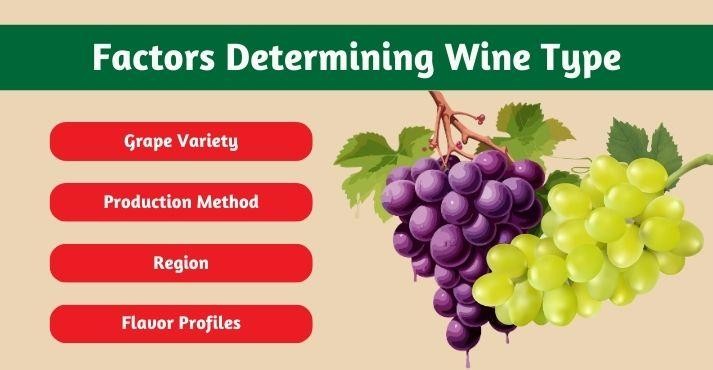
A wine’s type is shaped by a combination of factors that define its taste, aroma, and overall character. When understanding these elements, you can navigate the vast world of different types of wine with ease and confidence.
1. Grape Variety
Each grape variety brings its unique set of qualities to a wine. The choice of grape determines its flavors, aromas, and structure. For instance, Pinot Noir is celebrated for its delicate fruit notes of cherry and raspberry, complemented by earthy undertones.
The grape variety forms the foundation of any wine classification, making it a crucial factor in defining a wine’s personality.
2. Production Method
The method by which wine is made plays a significant role in shaping its characteristics. Winemaking involves a series of processes, from fermentation to aging. For example, wines aged in oak barrels, such as many Chardonnays, often exhibit creamy textures and notes of vanilla and spice.
These methods influence the wine variety, adding depth and complexity to the final product.
3. Region
The region where a wine is significantly produced impacts its taste and style. The concept of terroir, encompassing soil, climate, and topography, plays a key role in shaping the wine.
For example, a Sauvignon Blanc from New Zealand is known for its vibrant tropical fruit notes, while a Sauvignon Blanc from the Loire Valley in France is admired for its grassy mineral qualities. Recognizing regional differences helps wine lovers explore the full spectrum of wine classifications.
4. Flavor Profiles
Wines can range from sweet to dry, light to full-bodied, and fruity to earthy. These flavor profiles are influenced by factors such as grape variety, fermentation, and aging.
For instance, Riesling offers a versatile range of sweetness levels, from bone-dry to luscious dessert wines, making it a popular choice for various occasions. Recognizing these distinctions allows you to choose the best wine type for your personal preferences or to pair with specific foods.
Old World vs. New World Wines
The world of wine is richly diverse, and one of the most compelling distinctions is between Old World wines vs. New World wines. This contrast stems from differences in history, tradition, geography, and winemaking techniques.
While both styles offer exceptional flavors and unique experiences, they cater to different palates and preferences. Exploring this divide provides a fascinating insight into the evolution of wine classifications and helps wine lovers navigate the vast array of wine types.
What Defines Old World Wines?
Old World wines originate from regions with centuries-old winemaking traditions, such as France, Italy, Spain, and Germany. These wines emphasize terroir, the natural environment where grapes are grown, including soil, climate, and topography.
Known for their subtle, earthy flavors, Old World wines prioritize balance, structure, and the expression of regional characteristics.
For example, Italy’s Nebbiolo, used in Barolo and Barbaresco, exemplifies Old World complexity with flavors of cherry, rose petals, and truffle. Strict regulations like France’s AOC and Italy’s DOCG systems ensure authenticity and quality.
What Defines New World Wines?
New World wines hail from countries like the U.S., Australia, Chile, and New Zealand, where winemaking was introduced more recently. They are less constrained by tradition and often feature bold, fruit-forward flavors, high alcohol content, and modern techniques.
These wines highlight innovation and appeal to contemporary tastes. California’s Zinfandel, with its vibrant blackberry, jam, and spice notes, exemplifies the New World’s approachable, expressive style. New World winemakers often focus on consistency and accessibility rather than strictly adhering to terroir.
Key Differences: Old World vs. New World
- Terroir vs. Technique: Old World emphasizes the environment, while New World focuses on winemaking innovation.
- Flavor Profiles: Old World wines are subtle and earthy; New World wines are bold and fruit-forward.
- Structure: The Old World prioritizes balance and age-worthiness; the New World emphasizes immediate enjoyment.
- Labeling: Old World labels by region; New World labels by grape variety.
15 Types of Wine
The world of wine is incredibly diverse, offering an array of wine types to suit every taste and occasion. Let’s explore 15 of the most popular varieties and what makes each one special.
1. Cabernet Sauvignon
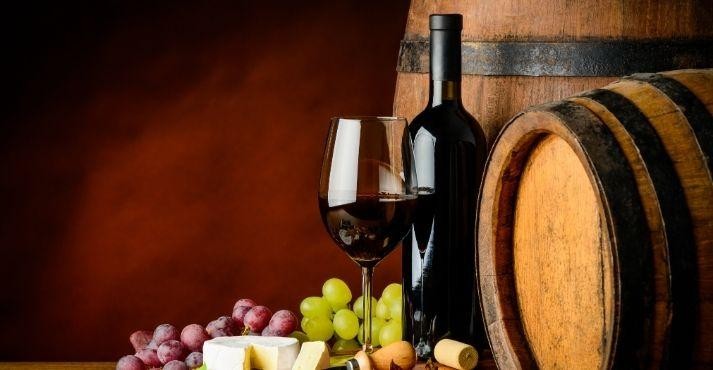
Cabernet Sauvignon is one of the most famous types of wine, cherished for its full-bodied structure and remarkable aging potential. This red wine is bold, with a complex profile that makes it a favorite among enthusiasts and a staple in wine collections worldwide.
- Grape Variety: Cabernet Sauvignon is known for its thick-skinned grapes, which produce wines with high tannins and acidity. These qualities allow the wine to age gracefully, often developing more complexity over time.
- Production Method: Traditionally, Cabernet Sauvignon is aged in oak barrels, which impart notes of cedar, vanilla, and spice. This aging process enhances its flavors and softens its robust tannins.
- Production Regions: Bordeaux is the birthplace of Cabernet Sauvignon, with Napa Valley (USA) and Coonawarra (Australia) producing renowned examples. Bordeaux blends often include Merlot and Cabernet Franc, while Napa Cabernets are prized for their rich fruit flavors.
- Flavor Profile: Expect bold flavors of blackcurrant, blackberry, and hints of tobacco, accompanied by structured tannins and a long finish.
- Food Pairings: The intensity of Cabernet Sauvignon pairs well with grilled steaks, hearty stews, and aged cheeses. Its tannic structure complements the fat content in rich dishes, creating a harmonious balance.
2. Chardonnay
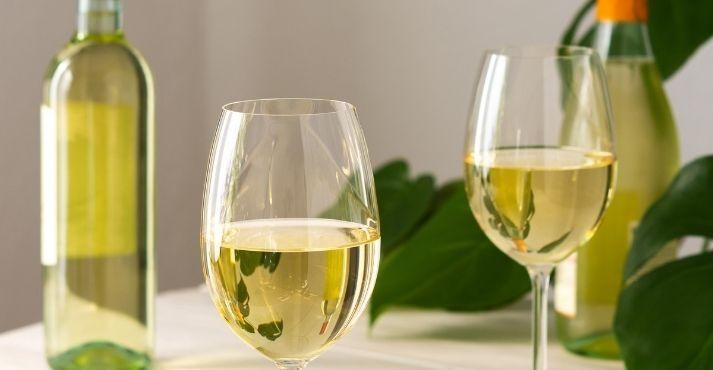
Chardonnay is a highly versatile wine variety, often described as a winemaker’s canvas. This white wine can range from buttery and rich to crisp and citrusy, depending on the production style.
- Grape Variety: Chardonnay grapes are neutral in flavor, allowing the production method and terroir to influence the wine’s characteristics.
- Production Method: Chardonnays aged in oak barrels develop creamy textures and buttery flavors, often with hints of vanilla and toast. In contrast, stainless-steel fermentation produces fresher, fruit-driven wines with crisp acidity.
- Production Regions: Burgundy, France, is the benchmark for premium Chardonnay, particularly from the Chablis and Côte de Beaune regions. California Chardonnays are known for their rich, oaky styles, while Australian examples, mainly from Margaret River, are often more restrained.
- Flavor Profile: Chardonnay offers flavors of green apple, pear, and citrus in unoaked versions, while oaked Chardonnays add notes of butterscotch, caramel, and tropical fruit.
- Food Pairings: This wine type pairs beautifully with creamy pasta dishes, roasted chicken, and seafood like lobster or scallops.
3. Dessert Wine
Dessert wines are a sweet delight, designed to complement desserts or be enjoyed as a treat on their own. This category includes famous styles like Port, Sauternes, and Tokaji, each offering a luxurious finish to any meal.
- Grape Variety: Grapes used for dessert wines are often harvested late, allowing sugars to concentrate. Some, like Sauternes, are made from botrytized grapes affected by “noble rot,” which adds unique honeyed flavors.
- Production Method: Many dessert wines are fortified, meaning brandy is added to increase alcohol content and preserve sweetness. Others rely on natural sugars from late-harvest or frozen grapes, as seen in Ice Wines.
- Production Regions: Portugal is renowned for Port, while Sauternes from Bordeaux is a classic sweet wine. Hungary’s Tokaji Aszu is another iconic example.
- Flavor Profile: These wines are rich and sweet, with flavors ranging from honey and apricot to caramel and dried fruits.
- Food Pairings: Pair dessert wines with crème brulee, blue cheeses, or fruit-based pastries for an indulgent combination.
4. Merlot
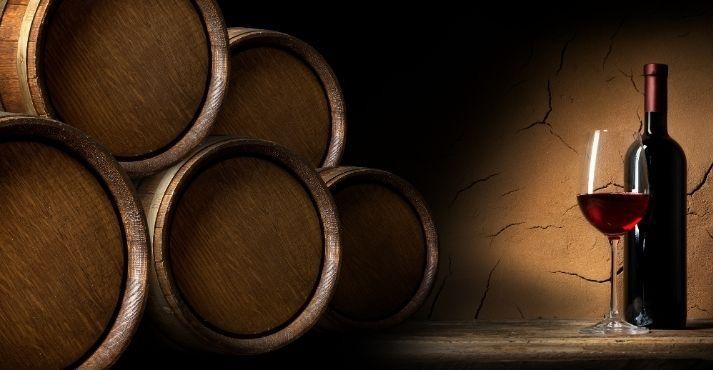
Merlot is one of the most approachable wine types, loved for its smooth texture and versatile flavor profile. It’s an excellent choice for casual sipping or pairing with a variety of dishes.
- Grape Variety: Merlot grapes produce wines with soft tannins and moderate acidity, making them easy to enjoy. They are also often blended with other grapes, particularly Cabernet Sauvignon, to create balanced and complex wines.
- Production Method: Merlot is typically fermented in stainless steel or aged in oak barrels, depending on the desired style. Oak aging improves its flavors with notes of vanilla and spice.
- Production Regions: Bordeaux is home to world-class Merlot, particularly in the Right Bank regions like Pomerol and Saint-Emilion. California and Chile also produce exceptional Merlots with bold, fruit-forward profiles.
- Flavor Profile: Expect flavors of plum, cherry, and chocolate, with hints of herbs or vanilla, depending on the region and aging process.
- Food Pairings: Merlot pairs wonderfully with pizza, roasted vegetables, grilled chicken, and lighter cuts of meat.
5. Nebbiolo
Nebbiolo is an Italian treasure, known for producing some of the most prestigious wine types like Barolo and Barbaresco. This grape thrives in Italy’s Piedmont region, where it achieves its finest expression.
- Grape Variety: Nebbiolo grapes are notoriously tricky to grow but yield wines with remarkable depth and complexity. They are high in acidity and tannins, giving the wine excellent aging potential.
- Production Method: Nebbiolo wines are often aged for several years in oak barrels and then in bottles before release. This extended aging process softens the tannins and develops the wine’s bouquet.
- Production Regions: Nebbiolo is exclusively grown in Italy’s Piedmont region, with Barolo and Barbaresco being the most famous expressions.
- Flavor Profile: Aromas of rose, cherry, tar, and truffle dominate Nebbiolo wines, while the palate is marked by high acidity and firm tannins.
- Food Pairings: Nebbiolo pairs beautifully with truffle-based dishes, risottos, and aged cheeses, complementing the wine’s earthy and savory profile.
6. Pinot Gris
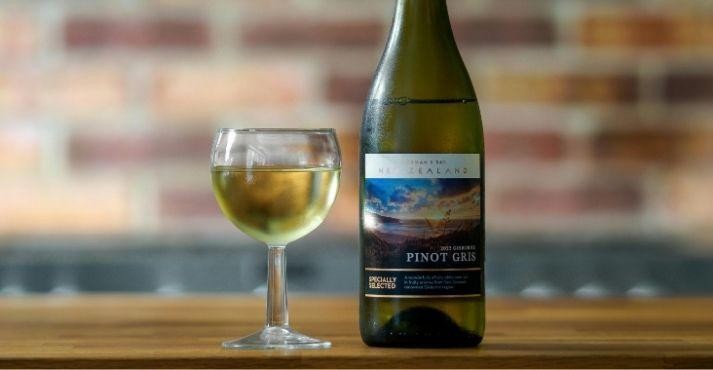
Also known as Pinot Grigio, Pinot Gris is a light and refreshing white wine that’s perfect for casual occasions or as an aperitif. This wine variety is celebrated for its crisp, zesty character.
- Grape Variety: Pinot Gris grapes are known for their grayish-blue skins, which create wines with subtle flavors and a clean finish.
- Production Method: Most Pinot Gris wines are fermented in stainless steel tanks to preserve their fresh, fruity profile. Some producers also experiment with skin contact, creating orange wines with more depth and texture.
- Production Regions: Italy leads the world in producing Pinot Grigio, offering light and easy-drinking styles. Alsace (France) produces fuller-bodied Pinot Gris, while Oregon has gained recognition for its balanced expressions.
- Flavor Profile: Expect notes of citrus, green apple, and pear, often with hints of minerality. Alsatian Pinot Gris may show more decadent flavors of honey and spice.
- Food Pairings: Pair Pinot Gris with seafood, light salads, or soft cheeses for a delightful dining experience.
7. Pinot Noir
Pinot Noir is often regarded as one of the most elegant and complex types of wine, offering a light-bodied red wine that captivates with its finesse and depth. Its versatility makes it a favorite among connoisseurs and newcomers alike.
- Grape Variety: Pinot Noir grapes are thin-skinned and notoriously tricky to grow, requiring cool climates to thrive. This delicate nature results in wines with soft tannins and intricate layers of flavor.
- Production Method: Pinot Noir is often fermented in small batches to maintain its delicate character. Many producers use minimal intervention to preserve the purity of the grape, while oak aging adds subtle spice and earthy undertones.
- Production Regions: Burgundy, France, is the spiritual home of Pinot Noir, producing some of the world’s most revered wines. Oregon and New Zealand are also renowned for their high-quality expressions, which often showcase ripe fruit and floral notes.
- Flavor Profile: Expect flavors of cherry, raspberry, and cranberry, complemented by hints of earth, mushroom, and spice. The wine’s light body and silky texture make it incredibly approachable.
- Food Pairings: Pinot Noir pairs beautifully with duck, salmon, and mushroom-based dishes, as its acidity and fruitiness complement a wide range of flavors.
8. Riesling
Riesling is an aromatic white wine that showcases extraordinary versatility, ranging from bone-dry to intensely sweet styles. It is beloved for its crisp acidity and vibrant fruit flavors, making it one of the most distinctive wine types in the world.
- Grape Variety: Riesling grapes are highly expressive of their terroir, producing wines with intense aromatics and refreshing acidity.
- Production Method: Depending on the style, Riesling may be fermented dry, semi-sweet, or sweet. Some Rieslings are made from late-harvest or botrytized (noble rot) grapes, improving their sweetness and complexity.
- Production Regions: Germany is the traditional home of Riesling, particularly in the Mosel and Rhine regions. Australia’s Clare Valley is known for its dry Rieslings with lime and mineral notes.
- Flavor Profile: Expect flavors of lime, green apple, apricot, and honey, often with floral and mineral undertones. Sweet Rieslings may feature layers of peach and tropical fruit.
- Food Pairings: Riesling pairs perfectly with spicy foods like Thai or Indian cuisine and fruity desserts, as its sweetness balances heat and improves flavors.
9. Rosé Wine

Rosé wine is a versatile and refreshing wine type, perfect for warm weather or casual gatherings. Its beautiful pink hue is achieved through a brief period of skin contact during fermentation, creating a wine that is as visually stunning as it is delicious.
- Grape Variety: Rosé can be made from a variety of red grape varieties, including Grenache, Syrah, and Pinot Noir.
- Production Method: The primary method for making rosé is limited maceration, where the grape skins are left in contact with the juice for a short time to impart color. Some rosés are blends of red and white wines, though this is less common in premium styles.
- Production Regions: Provence, France, is synonymous with dry, elegant rosés. Spain’s rosados and Italy’s rosato offer more robust expressions, while California produces fruit-forward styles.
- Flavor Profile: Rosé wines are typically light and crisp, with flavors of strawberry, watermelon, and citrus, often accompanied by floral or herbal notes.
- Food Pairings: Rosé pairs well with grilled vegetables, seafood, and charcuterie, making it a versatile choice for many meals.
10. Sangiovese
Sangiovese is Italy’s most iconic grape, forming the backbone of classic wines like Chianti and Brunello di Montalcino. This wine type is celebrated for its food-friendly nature and rich, rustic flavors.
- Grape Variety: Sangiovese grapes are known for their high acidity and firm tannins, which make them ideal for aging and pairing with food.
- Production Method: Sangiovese wines are typically fermented in stainless steel or concrete tanks to preserve their bright fruit flavors. Oak aging is typical in premium styles, adding complexity and depth.
- Production Regions: Tuscany is the heart of Sangiovese production, with Chianti Classico and Brunello di Montalcino being the most famous expressions.
- Flavor Profile: Expect flavors of tart cherry, red plum, and dried herbs, often with hints of tomato and leather. The wine’s acidity and tannins create a lively, structured palate.
- Food Pairings: Sangiovese is a natural partner for tomato-based dishes, pasta, and pizza, as its acidity mirrors the acidity in the food, creating a harmonious balance.
11. Sauvignon Blanc
Sauvignon Blanc is a crisp, aromatic white wine that’s loved for its fresh flavors and versatility. Its zesty character makes it a favorite among lovers of refreshing white wine types.
- Grape Variety: Sauvignon Blanc grapes produce wines with high acidity and vibrant aromas.
- Production Method: This wine is often fermented in stainless steel tanks to preserve its freshness, though some winemakers use oak barrels for added texture and complexity.
- Production Regions: The Loire Valley in France produces classic Sauvignon Blancs with grassy, mineral notes, while Marlborough, New Zealand, is known for bold, tropical styles.
- Flavor Profile: Expect flavors of lime, passionfruit, and green pepper, often with a zesty, clean finish.
- Food Pairings: Sauvignon Blanc pairs beautifully with goat cheese, shellfish, and fresh green salads, making it a versatile option for light meals.
12. Sparkling Wines

Sparkling wines are synonymous with celebration, offering effervescence and elegance in every sip. From Champagne to Prosecco, this wine variety elevates any occasion.
- Grape Variety: Sparkling wines are made from various grapes, including Chardonnay, Pinot Noir, and Glera.
- Production Method: The bubbles in sparkling wines are created through secondary fermentation, either in the bottle (traditional method, like Champagne) or in tanks (Charmat method, like Prosecco).
- Production Regions: Champagne, France, is the gold standard for sparkling wine, while Italy’s Prosecco and Spain’s Cava offer excellent alternatives.
- Flavor Profile: Expect crisp flavors of green apple, citrus, and brioche in Champagne, while Prosecco is lighter with notes of pear and floral aromas.
- Food Pairings: Sparkling wines pair well with oysters, caviar, and soft cheeses, making them a versatile choice for celebrations or fine dining.
13. Syrah
Syrah, also known as Shiraz in Australia, is a bold and powerful wine type, known for its rich flavors and robust structure. It’s a favorite among lovers of full-bodied red wines.
- Grape Variety: Syrah grapes are dark-skinned and thrive in warm climates. They produce wines with deep color, high tannins, and concentrated flavors.
- Production Method: Syrah is often fermented in stainless steel or oak barrels, depending on the desired style. Aging in oak increases its flavors with notes of vanilla, spice, and smoke.
- Production Regions: The Rhône Valley in France produces iconic Syrahs like Cote-Rotie and Hermitage, which are known for their elegance and complexity. In contrast, Australian Shiraz from the Barossa Valley is more fruit-forward and full-bodied.
- Flavor Profile: Syrah offers bold flavors of blackberry, black pepper, and plum, often with smoky and meaty undertones. Australian Shiraz may also feature hints of chocolate and jam.
- Food Pairings: Syrah pairs beautifully with barbecue, grilled meats, and hearty stews. Its bold tannins and rich flavors make it a great match for robust dishes.
14. White Wine
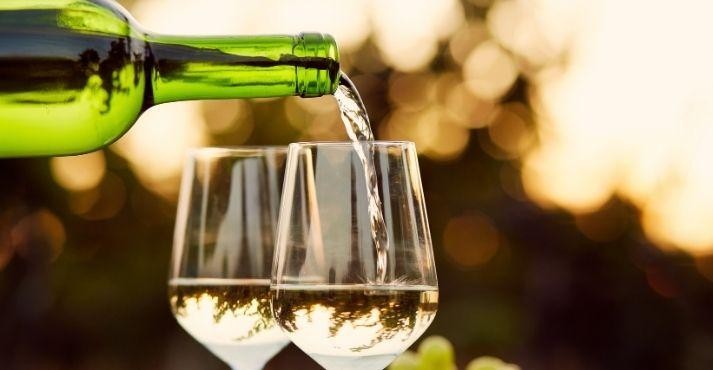
White wine is a broad category encompassing a variety of styles, from crisp and dry to sweet and aromatic. It is one of the most versatile wine types, suitable for casual sipping or pairing with meals.
- Grape Variety: White wines can be made from a wide range of grapes, including Chardonnay, Sauvignon Blanc, and Riesling. Notable unique varieties like Grüner Veltliner from Austria add diversity to this category.
- Production Method: Most white wines are fermented in stainless steel tanks to preserve their fresh, fruity character. Some, like Chardonnay, may be aged in oak barrels for added richness and complexity.
- Production Regions: White wines are produced worldwide, with Burgundy (France) known for its Chardonnay, New Zealand for Sauvignon Blanc, and Austria for Grüner Veltliner.
- Flavor Profile: The flavor of white wine ranges from citrus and green apple in crisp styles to honey and tropical fruit in richer ones. Grüner Veltliner, for instance, is known for its peppery finish and minerality.
- Food Pairings: White wines are excellent with seafood, light salads, and creamy pasta dishes. Grüner Veltliner pairs particularly well with Asian cuisine and vegetarian dishes.
15. Zinfandel
Zinfandel is one of the most versatile wine types, known for its fruity intensity and ability to produce both bold reds and refreshing rosés. It’s a staple in California winemaking.
- Grape Variety: Zinfandel grapes are thin-skinned and high in sugar content, which contributes to their signature ripe, jammy flavors and high alcohol levels.
- Production Method: Zinfandel can be made into a range of styles, from dry reds to sweet dessert wines and rosés (known as White Zinfandel). Oak aging heightens its flavors with hints of vanilla and spice.
- Production Regions: While Zinfandel originated in Croatia, it has become synonymous with California, where regions like Napa Valley and Lodi produce world-class examples.
- Flavor Profile: Expect flavors of blackberry, raspberry, and plum, often with notes of black pepper, spice, and smoky oak. White Zinfandel offers lighter flavors of strawberry and watermelon.
- Food Pairings: Zinfandel pairs wonderfully with barbecue, pizza, and rich pasta dishes. Its fruitiness and boldness complement smoky and savory flavors beautifully.
Tips for Choosing the Right Wine
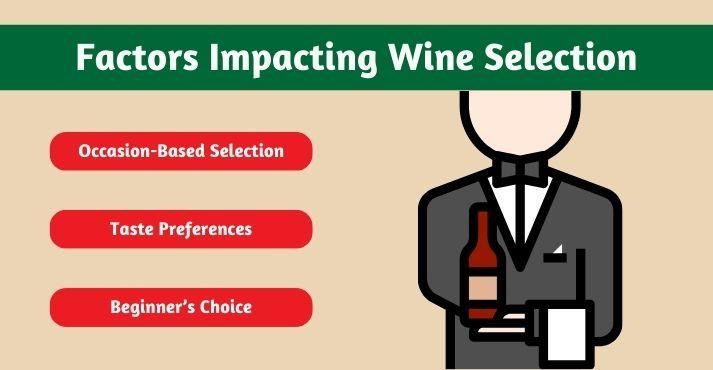
Choosing the right wine can seem overwhelming, given the vast variety of options available. Comprehending the basics of wine classifications, your personal preferences, and the context in which the wine will be enjoyed can simplify the process.
Here are some helpful tips for selecting the best types of wine for different occasions, tastes, and levels of experience.
Occasion-Based Selection
The type of wine you choose often depends on the occasion. Certain wine types are naturally suited to specific events or meals.
- Celebrations and Special Occasions: For celebratory moments, sparkling wines like Champagne or Prosecco are classic choices. Their effervescence adds a festive touch, and their crisp, refreshing nature makes them a crowd-pleaser.
- Hearty Meals: When paired with rich, hearty dishes, red wines like Cabernet Sauvignon or Syrah work beautifully. Their bold flavors and tannic structure complement the depth of roasted or grilled meats.
- Light Meals or Casual Gatherings: For lighter fare, white wines like Sauvignon Blanc or Pinot Gris are excellent choices. They pair well with seafood, salads, and vegetarian dishes.
- Sweet Endings: Dessert wines such as Port wine or Sauternes are perfect for ending a meal on a sweet note. Their lush flavors of honey and dried fruits complement pastries and cheese platters.
Taste Preferences
Understanding your taste preferences is key to finding a good wine to drink. Wines vary widely in flavor profiles, sweetness levels, and body, so identifying what you enjoy will guide your selections.
- Sweet vs. Dry: Sweet wines, like Riesling or Moscato, are excellent for those who prefer fruity, sugary flavors. Dry wines, such as Sauvignon Blanc or Nebbiolo, appeal to those who enjoy more subtle, complex tastes with less sweetness.
- Light-Bodied vs. Full-Bodied: Light-bodied wines like Pinot Noir and Pinot Grigio are delicate and easy to drink, making them suitable for lighter meals or warm weather. Full-bodied wines, such as Chardonnay or Cabernet Sauvignon, have richer textures and flavors, making them ideal for robust dishes.
- Flavor Notes: Pay attention to flavor notes that resonate with you. For instance, if you enjoy citrus and herbaceous flavors, Sauvignon Blanc might be your favorite white wine type. If you prefer dark fruit and spice, Zinfandel or Shiraz could be your go-to reds.
Tips for Beginners
For those new to wine, starting with approachable and versatile options is key. Some wines are easier to enjoy for novices due to their balanced flavors and lower tannin levels.
- Begin with Light and Fruity Wines: Wines like Merlot and Pinot Grigio are excellent entry points. Merlot’s soft tannins and flavors of plum and cherry make it easy to enjoy, while Pinot Grigio offers crisp, refreshing notes of citrus and green apple.
- Experiment with Varieties: Don’t hesitate to explore different regions and styles. A Chardonnay from California will taste different from one produced in Burgundy. Trying different types of wine expands your palate and helps you discover new favorites.
- Learn the Basics: Familiarize yourself with common wine terms like “dry,” “oaky,” and “tannic” to better understand what you’re drinking.
- Pay Attention to Labels: Learning how to read a wine label can provide valuable insights into the wine’s style, region, and flavor profile. This can guide you in making informed decisions.
Conclusion
Wine is more than just a beverage; it’s a journey of discovery that is rich with culture, history, and flavor. Each bottle tells a unique story, shaped by its grape variety, production methods, and the region it hails from.
You can be drawn to the bold complexity of Cabernet Sauvignon, the crisp freshness of Sauvignon Blanc, or the effervescence of sparkling wines; there’s a perfect wine type for every occasion and palate.
This guide has introduced you to the diversity of wine classifications and styles, helping you navigate the world of different types of wine with confidence.
So, raise your glass to new flavors, toast to shared moments, and savor the adventure of discovering good wine to drink. Each sip offers an opportunity to connect with the artistry behind this timeless craft. Cheers to your wine journey!





























